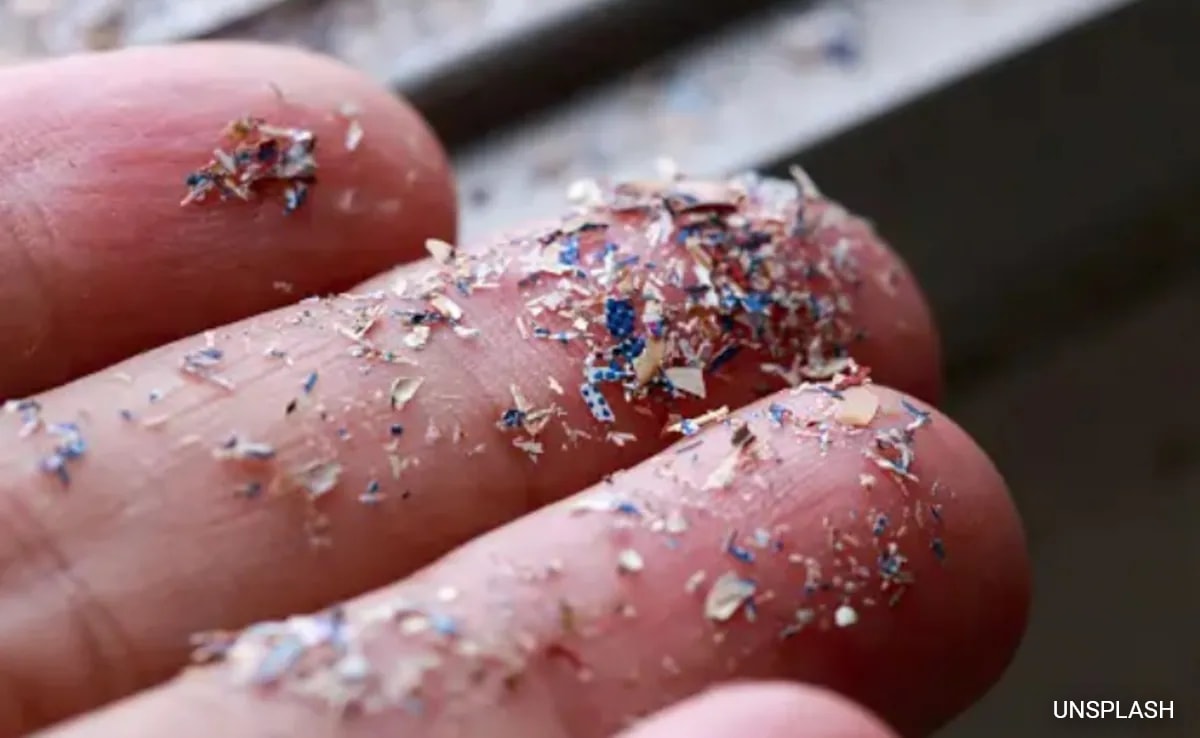2024-10-16 02:30:07

Microplastics can pass from pregnant mothers to their unborn offspring.
Microplastics can be passed from pregnant mothers to their unborn offspring, new research has revealed. Tiny plastic pieces are actually living in the lungs, hearts, livers, kidneys, and brains of newborn mice exposed through inhalation of polyamide-12, or PA-12, researchers from Rutgers University reveal in a new study.
Through this research, it is indicated that during pregnancy, the microplastics can pass through the placenta and may expose the developing fetus. Even though this fact clearly indicates exposure of such offspring to unknown long-term health consequences, the presence of these plastics in such life-saving organs is very alarming.
Also Read | Microplastics Invade Human Brains, Researchers Call For Global Emergency
According to the Rutgers Health study published in the journal Science of the Total Environment, Researchers have long understood that micro- and nanoplastic particles (MNPs), which enter the environment through oxidation and natural degradation of consumer products, are easily deposited in the human body through inhalation, absorption and diet. Experts also understand that these pollutants can cross the placental barrier and deposit in fetal tissues.
What’s been unclear is whether these particles remained in tissue long after birth. The Rutgers Health researchers found that they do, at least in rats. Their data that could have implications for human health.
“Nobody wants plastic in their liver,” said Phoebe A Stapleton, an associate professor of pharmacology and toxicology at the Rutgers Ernest Mario School of Pharmacy, and the study’s senior author. “Now that we know it’s there – as well as in other organs – the next step is to understand why and what that means.”
As per a release by the Rutgers University, to assess the persistence of micro- and nanoplastic particles in neonatal tissue following maternal exposure, Stapleton and colleagues exposed six rats to aerosolized food-grade plastic powder for 10 days during pregnancy.
Rodents are good test subjects for this type of study, Stapleton said, because humans and rodents both possess a hemochorial placenta, meaning that maternal and fetal blood don’t come into direct contact during circulation.
Two weeks after birth, two newborn rats – one male and one female – were tested for micro- and nanoplastic exposure. In both cases, the same type of plastic that the mothers inhaled during pregnancy were found in the offspring’s lung, liver, kidney, heart and brain tissue. No plastics were found in a control group.
Stapleton said the findings are one more piece of evidence illustrating the potential dangers of micro- and nanoplastics in the environment.
“These results raise concerns for the toxicological impacts associated with MNPs exposure, maternal-fetal health, and systemic MNPs particle deposition,” the researchers wrote.
microplastics,pregnancy,fetal organs,long-term health,environmental pollution
Source link
![]()
